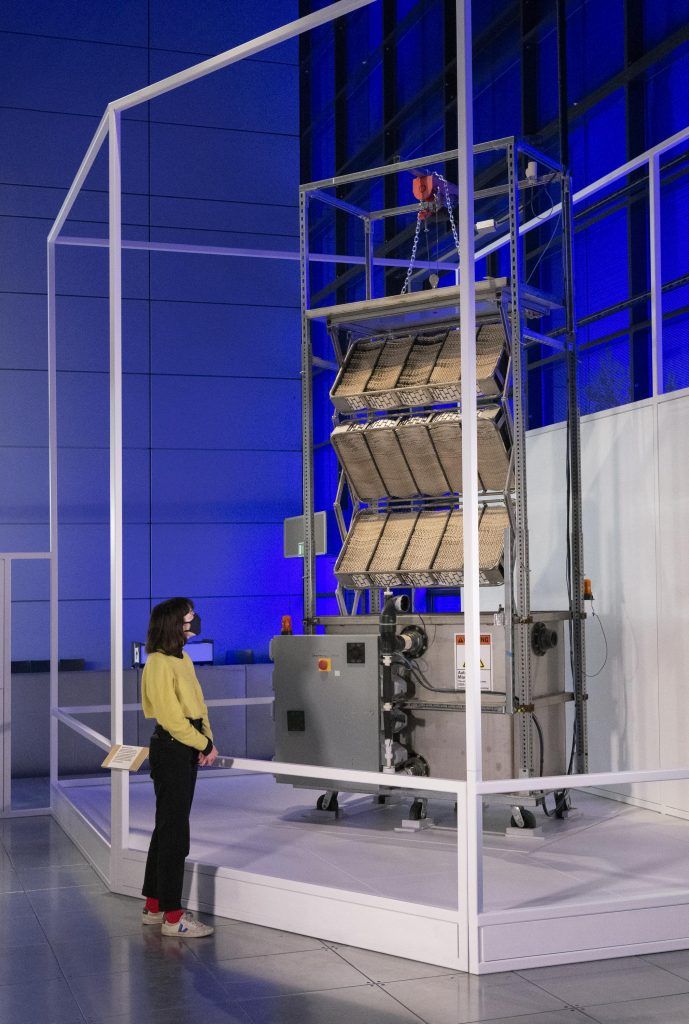The exhibition, titled Our Future Planet, demonstrates the potential of carbon capture to reduce the amount of carbon dioxide found in the atmosphere
 Photo: Science Museum
Photo: Science MuseumEnvironment
By
Rachel Rajan George
27 January 2022
Issue 1790
Our Future Planet is an exhibition that showcases the potential for carbon capture to reduce carbon dioxide levels in the atmosphere. Carbon capture refers to the process of capturing and storing carbon dioxide emissions from industrial processes before they reach the atmosphere. There are many methods that can be used to capture carbon dioxide emissions from industrial processes.
The exhibition hall is home to a direct air capture machine. Climeworks, a Swiss company, developed this technology. Each unit can remove 50 tonnes carbon dioxide from the atmosphere annually. Climeworks can be used by individuals and companies to remove carbon dioxide from the air. This allows others to take control of their carbon dioxide emissions.
The unit receives ambient air through a collector. After that, carbon dioxide is removed by a filter. The machine stores carbon dioxide, and then the residual air is released from the unit. The carbon dioxide that is left can be used to manufacture bracelets and carbonating fizzy drinks.
Engineered solutions were also presented that mimic the natural process of trees. Professor Klaus Lackner, Arizona State University, designed a mechanical tree that captures carbon dioxide. The tree’s leaves are coated with carbonate-containing epoxy, which reacts with carbon dioxide and forms bicarbonate. The leaves become wetted as they move towards the tree’s base. The bicarbonate then reverts to a carbonate form and releases carbon dioxide into a storage container. The carbon capture process begins again when the lid is lifted off the base. The prototype of the mechanical tree towers above all other exhibits.
After carbon dioxide has been captured, it becomes clear that there is a pressing need to have large storage facilities. Because of its proximity to emptying oil fields in the Northern Sea and Irish Seas, the UK is well-positioned to use carbon capture technology. The Northern Endurance Partnership facilitates offshore transportation in order to sequester the UK’s carbon at sea.
Nature-based solutions can be used to organically store carbon dioxide, thereby avoiding the need for storage. The Carbfix project is an Icelandic natural storage method that combines carbon dioxide with underground rock. The carbon dioxide is dispersed in water and then injected into reactive rock rich in metals. These rocks are a permanent storehouse for carbon dioxide since the carbonates created in this process are chemically stable.
Civil engineers are increasingly choosing wood over concrete and other steel in order to reduce the amount of embodied carbon in construction materials. In the hall is a model of a wooden building with floors and frames. This building will be constructed at Goldsmiths University of London using sustainably sourced timber.
The exhibition highlights strategies for forest management, echoing the recent renewed call to tree planting. A forest that is well managed will have a high carbon-capturing capacity. The exhibition features a soil respiration apparatus, which was developed by the University of Birmingham. This apparatus can be used to measure carbon dioxide released from soil, roots, and fungi in a woodland ecosystem. The dent was caused by a fallen branch during a tornado.
The video presentations were a testament to the enthusiasm displayed by the innovators of these innovations. The next step is to make these laboratory-based inventions work on a larger scale. Global policy and political will will also help us reduce carbon dioxide in our atmosphere. The exhibition is open to the public until September 2022. For more information on carbon capture systems that can save our planet’s future, visit the Science Museum’s Wellcome Wing Level 0.
